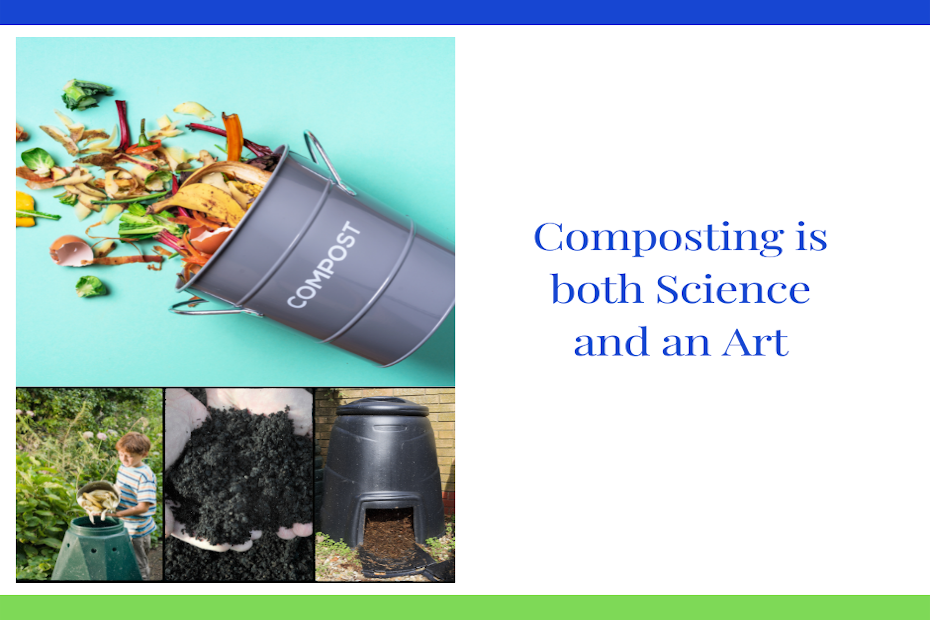Composting is the chemical transformation of organic matter into nutrient-rich soil that can enrich plants, crops, and trees. The composting process takes place naturally and is carried by microorganisms that feed on the organic matter and speed up its decomposition. Typically, organic waste consists of around 65-90% vegetable and fruit waste, and composting food waste thus helps in reducing the amount going to landfills and benefits the environment by enriching the soil and improving soil water retention capacity.
The science of composting is simple and interesting. To create the right compost, one needs to create an ideal environment that includes warm temperature, nutrients, moisture, and oxygen. Some microorganisms thrive in such an environment and consume the organic matter in the compost leaving nutrient-rich soil. The organic matter that could be used is kitchen waste containing vegetable peels, fruits peels, eggshells, tea leaves, twigs, dry leaves, grass, lint, newspaper, cardboard, used flowers, etc. but no animal products like cheese, meat, fish as they may cause odour problems and attract pests and rodents, etc.
Two methods are generally used for composting: Aerobic (with air) and Anaerobic (without air). As the name suggests, aerobic composting takes place in an open space, say a pit in the backyard or a specially created aerobic environment. It can support large quantities and requires stirring the matter at least weekly for proper aeration. With this method, the compost will be ready in a few weeks. On the other hand, anaerobic composting requires closed and tight spaces like airtight bins and is suitable for small spaces such as balconies. The quantity of the matter required is small and requires no stirring. However, this process will be slower than the aerobic process and it takes a few months for the compost to get ready. Thus, according to the availability of space, and the amount of kitchen and garden waste generated one can choose any of the two options.
However, the art of composting is that any conditions can be created at any place, be it large scale or small.
One can be creative in composting, choosing aesthetically pleasing compost bins made of various materials such as terracotta, recycled metal, or simply a plastic bin. The compost bin is like a canvas for a composting artist. What one requires in the final compost is based on what is added as nutrients for the compost. Start a compost pit with banana peels, orange rinds, spinach, and tomatoes for a constant supply of potassium. If one is looking for nitrogen-rich compost then use grass clippings, plant cuttings, and fruit and vegetables. Eggshells, grains, and nuts can add to the phosphorus component. Not all composts are created equal. What goes in as feedstocks partly determines what comes out. The quality of the compost generated will depend on the nutrients as well conditions maintained in which it is processed. Depending upon where the compost has to be applied, the compost quality has to be maintained.
